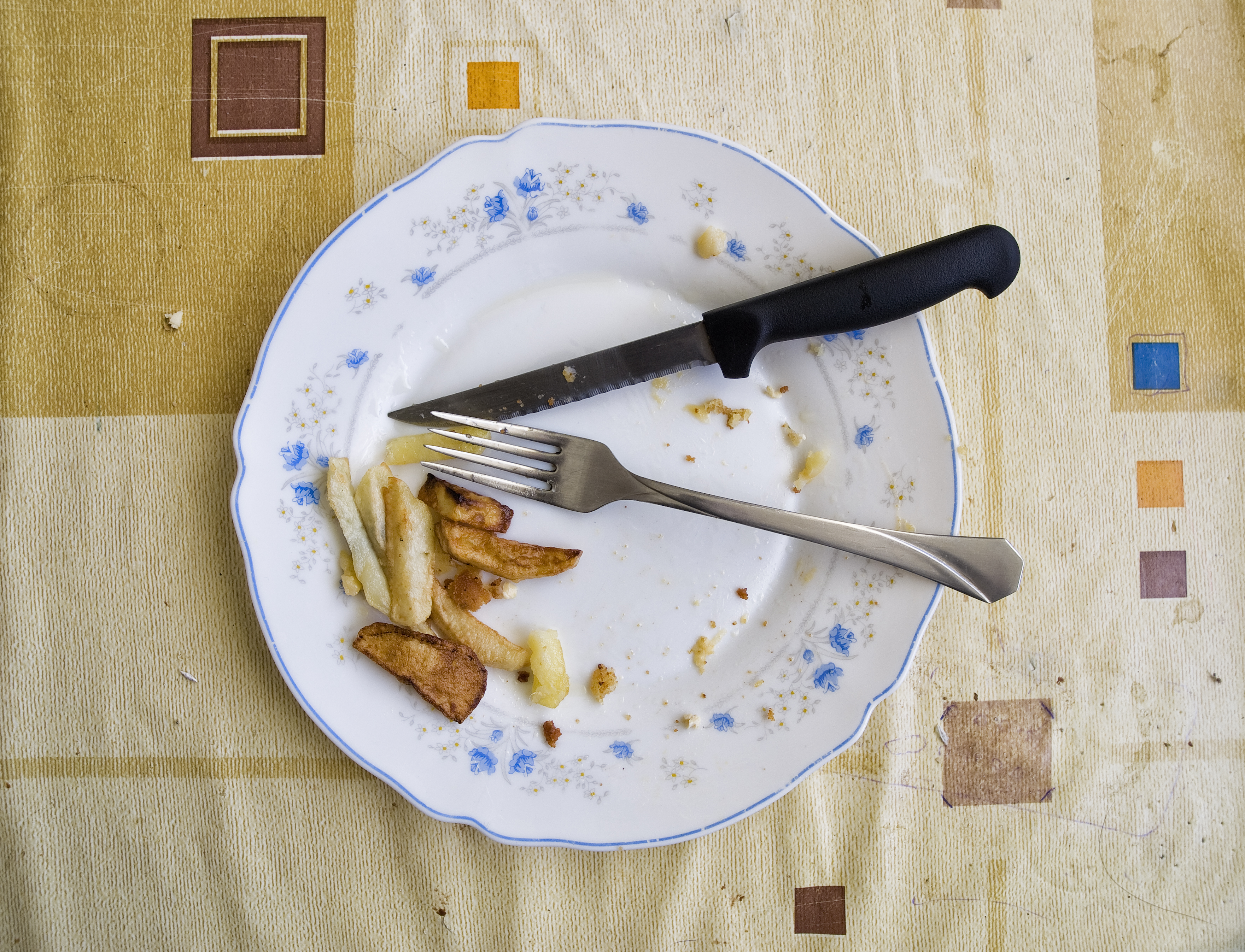
ShutterstockStill working on that?
Imagine if every time you ordered a pizza, you opened the box, removed four or five grease-dripping slices — loaded with sausage, pepperoni, mushrooms, the works — and tossed them in the trash. That, in effect, is what Americans as a group do every day: From farm to table, we waste an estimated 40 percent of all the food produced in this country. Meanwhile, 50 million people in the United States don’t know where their next meal is coming from.
We all deserve some of the credit for this waste — from farmers to grocers to you and me letting our leftovers grow mold in the fridge. But now, a bunch of smart people are harnessing mobile technology to cut down on the amount of food that ends up in the dumpster — and get more of it to people in need.
“People in the food industry know how much food they waste, and they don’t like it at all,” says Roger Gordon, co-founder of one such new platform, Food Cowboy. He found this out from his brother, Richard, a truck driver who often hauls produce and wanted to do something with the loads of rejected, or “kicked,” fruits and veggies he ends up with about once a week. “When it’s kicked for cosmetic reasons — the eggplant has the wrong barcode, the eggplant’s not straight enough — and he’s told to throw it away, he’s called me,” Gordon says. He’d work the phone and the web to find a food bank near Richard’s route that could accept the unwanted produce, sparing it from being tossed.
“We finally got smart and figured out, if these different apps [like Yelp] can help you find a place to buy food to eat, they can help you find a place to take food for other people to eat,” says Gordon.
Food Cowboy, still in beta, works with two large trucking companies and about 20 local charities along the East Coast’s I-95 corridor. If, for example, a pallet of cherry tomatoes falls over and the shipment is rejected, the trucking company sends an alert that allows Food Cowboy to query its nonprofit partners along the truck’s route: “Who can handle 40 crates of cherry tomatoes?” The platform accomplishes what used to be a time-consuming search almost instantly, making it much more likely that the orphaned tomatoes will find a home.
“Think of it as an air traffic controller for organic matter,” Gordon says. “If you’re a food charity, you’ve got the logistics ability of anybody else in the food chain now.”
(All food donors are protected from any liability concerns by the Good Samaritan Food Donation Act, which means if they donate in good faith and someone still gets sick, they can’t be sued.)
Food Cowboy tackles the waste problem at the distributor level; another platform, called Zero Percent, targets retail food waste — you know, like those huge bags of day-old bagels you’d normally have to dive into a dumpster to find. It works by sending out email and text alerts to a pool of volunteers from nonprofit groups when extra food becomes available. “If they happen to be driving by or have an hour that day, they can pick up the food,” explains founder Rajesh Karmani.
Zero Percent rolled out a year ago in Champaign-Urbana, Ill., and has since expanded to the Denver and Phoenix areas. It’s successfully donated almost 70,000 pounds of food so far. Karmani and his team hope to expand across the country before long.
Jonathan Bloom, author of the 2011 book American Wasteland: How America Throws Away Nearly Half of its Food, says working with distributors and stores helps, but “if you’re looking for the largest source of unused food in America, we need to look no further than farms.”
Buyers often reject fruits and vegetables that are not the ideal shape, size, or color, believing that customers will only buy perfect-looking produce. Consequently, farmers “do what anyone in their right mind with a riskier-than-average business would do — they plant a little extra for insurance,” reports the Natural Resources Defense Council’s Dana Gunders. “One grower estimated overplanting about 10 percent on a regular basis.” Crops that don’t stack up to traditional distributors’ impossibly precise standards — up to 30 percent of a given farmer’s harvest, according to an NRDC study — are simply plowed under.
Bay Area company FoodStar has found a way to target this most-wasteful weak link in the food chain. When farmers have produce that can’t compete in the industry beauty contest, “we’re able to buy that at very low prices, bring it into retail supermarkets, and offer it at extreme-value discount pricing,” explains company partner Stuart Rudick.
FoodStar also works with grocery-store produce departments to cut down on in-store waste. “For example, they’ve got three cartons of roma tomatoes, and there’s probably only two days before they start getting soft,” Rudick says. “We will work with them and schedule a flash sale inside their store.” FoodStar sends out text alerts to shoppers in the area, letting them know that roma tomatoes are, say, 50 percent off for a limited time. It’s the Bon Marché approach to grocery shopping.
FoodStar is piloting the program at Bay-Area chain Andronico’s. Once the system is in place, Rudick says the company hopes to expand to other retailers — particularly ones serving low-income communities where affordable, nutritious food is scarce.
Former Trader Joe’s executive Doug Rauch hopes to launch a similar program — the Urban Food Initiative — that would take the about-to-expire food the store can’t sell and use it to make healthy but cheap ready-to-eat meals for sale in food-insecure areas — “basically [competing] with fast food,” Bloom explains.
It’s tempting to view FoodStar and the Urban Food Initiative as continuations of the age-old tradition of dumping inferior products on the poor. “That sentiment is a real barrier to putting this perfectly edible nutritious food to use,” Bloom says; after all, this is food that should never have been considered “inferior” in the first place.
Which brings us to the real root of the problem: us, the consumers, who somewhere along the line started believing any apple that’s not cartoon-round isn’t worth eating. “Supermarket people say they would be happy to lower their standards if shoppers were to buy those things,” Bloom says.
So maybe solving our food-waste problem starts with convincing all the snobby shoppers out there that a crooked eggplant tastes just as good as a symmetrical one. (In fact, sometimes the funny fruit is actually superior — just compare an heirloom tomato to a hothouse one.) And if we knew how many of our neighbors went hungry, we might be less likely to forgo the to-go box — or even better, we might ask the restaurant if it’s heard of Zero Percent.
“If people don’t know this is important, why are they going to sign up and make the effort?” says Dana Frasz, executive director of Food Shift, a group that works to educate people about food waste.
Bloom, for his part, believes it all starts with more direct involvement in the food chain — growing our own food, buying directly from farmers, or simply just cooking more. “The more connected we are to our food, the more appreciative we are, and the less likely we are to waste it.”
After all, no one wants to see a meal they’ve slaved over go to waste. So take my Depression-raised grandma’s advice and become a member of the clean plate club. And spread the message far and wide that with produce — as with people — it’s inner beauty that counts.



